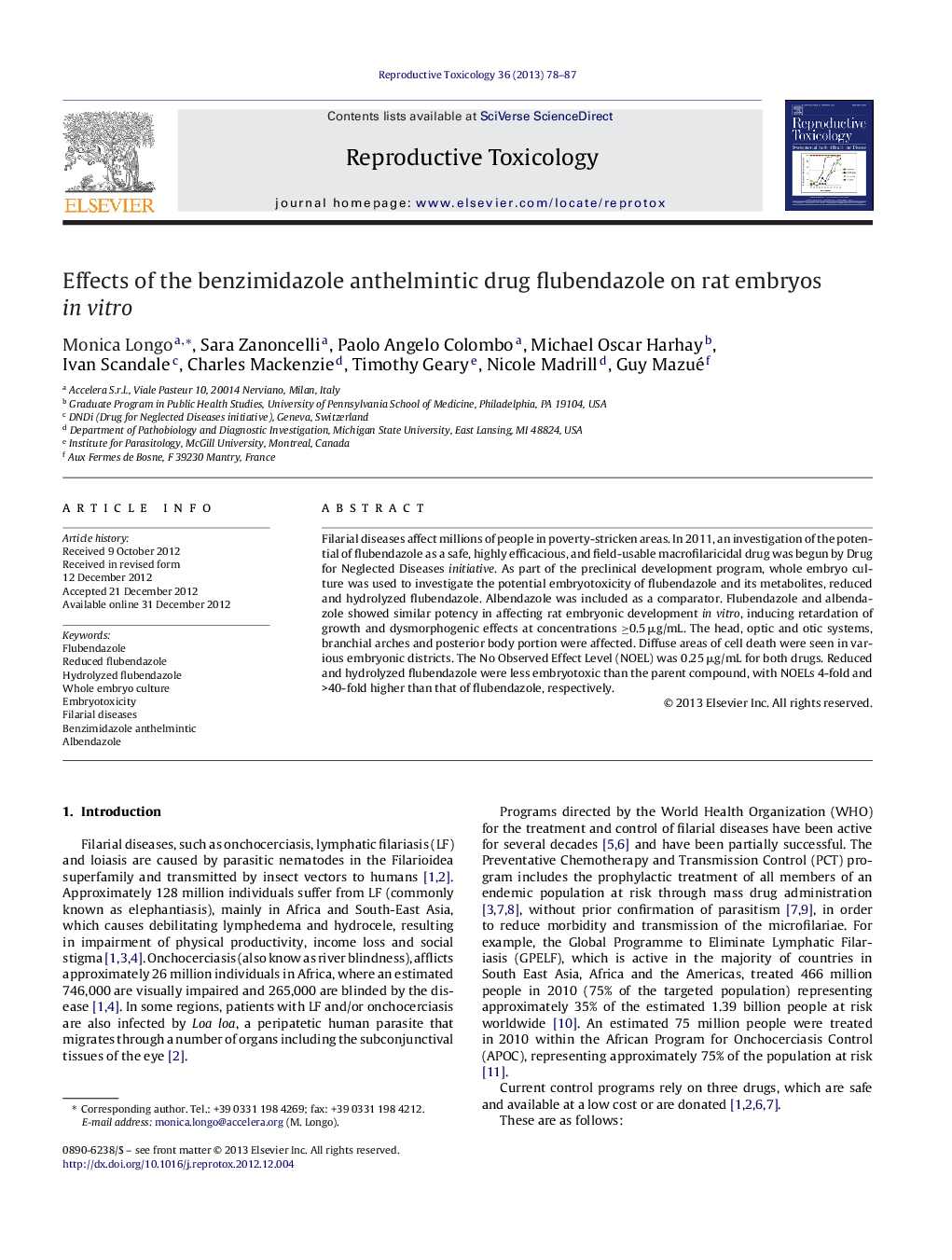| Article ID | Journal | Published Year | Pages | File Type |
|---|---|---|---|---|
| 2593634 | Reproductive Toxicology | 2013 | 10 Pages |
Filarial diseases affect millions of people in poverty-stricken areas. In 2011, an investigation of the potential of flubendazole as a safe, highly efficacious, and field-usable macrofilaricidal drug was begun by Drug for Neglected Diseases initiative. As part of the preclinical development program, whole embryo culture was used to investigate the potential embryotoxicity of flubendazole and its metabolites, reduced and hydrolyzed flubendazole. Albendazole was included as a comparator. Flubendazole and albendazole showed similar potency in affecting rat embryonic development in vitro, inducing retardation of growth and dysmorphogenic effects at concentrations ≥0.5 μg/mL. The head, optic and otic systems, branchial arches and posterior body portion were affected. Diffuse areas of cell death were seen in various embryonic districts. The No Observed Effect Level (NOEL) was 0.25 μg/mL for both drugs. Reduced and hydrolyzed flubendazole were less embryotoxic than the parent compound, with NOELs 4-fold and >40-fold higher than that of flubendazole, respectively.
► Flubendazole induced retardation of growth and dysmorphogenic effects from 0.5 μg/mL. ► Albendazole showed similar potency. ► The No Observed Effect Level (NOEL) was 0.25 μg/mL for both test items. ► NOEL for reduced flubendazole was 4-fold higher than flubendazole. ► NOEL for hydrolyzed flubendazole was >40-fold higher than flubendazole.
